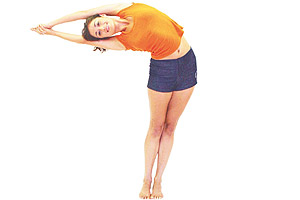Cranium: protector of the brain
The cranium -the same as other bones that give protection to some vital organ – consists of 22 bones, which shelter the brain and the main sense organs (eyes, ears and nose). Some of these bones form the cranium vault and others, the skeleton of the face.
– Cranium vault: eight bones that enclose and protect this vault are joined together by fixed articulations called sutures. The frontal bone curves around the cranium to form the forehead and the superior part of the eye sockets (bone cavity that holds the eye).
The two temporal bones protect the conducts that go to the middle and inner ear. The middle ear (behind the eardrum) houses the three smallest bones in our body: the hammer, anvil and stirrup. The first perceives the vibrations of the eardrum (to which it is attached) and then transmits them to the anvil and stirrup. The latter receives the vibrations augmented 20 times.
The occipital bone has a great orifice that communicates the cranium with the spine and through which the main nervous conducts pass. It is articulated with the atlas (the first cervical vertebra). Two parietal bones form the superior part of the cranium and its walls.
A small bone called ethmoid is located in the middle line. It forms the external wall of the nasal cavities.
The sphenoid bone is located in the front and middle part of the base of the cranium and has a central part that holds the hypophysis gland called theTurkish saddle.
– Bones of the face: these are the other 14 bones of the head and are divided into two parts: upper and lower jawbones (maxilla and mandible respectively).
The first part is made up of only the mandible, it is the only mobile bone and whose mission is to allow chewing.
The second part, on the other hand, is made up of the 13 remaining bones: 12 of them are paired up while the remaining one has no pair.
– The pairs are: the upper maxillae, the zygomatic bones, the lacrimal bones, the nasal conchas and the palatine bones. The vomer is the non paired bone.
Thoracic cage
The thoracic cage is made up of 12 vertebrae, 12 pairs of ribs that issue from the sides of the thoracic vertebrae, and by the sternum bone in the anterior part, where ribs from both sides arrive.
The seven superior pairs of ribs, known as true ribs, surround the body and join in the sternum through the coastal cartilage. The three that follow are called false ribs, because they are indirectly articulated with the sternum. The last two pairs of ribs, called floating ribs, surround the sides of the body and have no connection with the sternum.
Structural Pillar
The spine or vertebral column is a structure of 33 bones, called vertebrae, that begins in the cervical region, where it articulates with the base of the cranium, and ends in the sacrum-coccyx bone. Its function is to be the pillar of the skeleton and protect the spinal cord that is the structure that houses the nerves that command the movement of the body.
In the upper part of the spine, there are the seven cervical vertebrae of the neck, that are smaller and allow a greater degree of movement along the dorsal (thoracic) spine.
Then come 12 heavier bones, called thoracic or dorsal vertebrae, and they form the upper part of the back. These bones also help support the 12 pair of ribs.
Then the five lumbar vertebrae, that are the biggest bones in the spine and support most of the weight of the body.
Below these vertebrae is the sacrum, a bone located between the two hip bones making up the back part of the pelvis. Fitted into the bottom of the sacrum we find the coccyx, a small sharpened bone made up of four fused vertebrae. The coccyx serves no function at all, it is a remnant of a tail.








 Muere Evita
Muere Evita